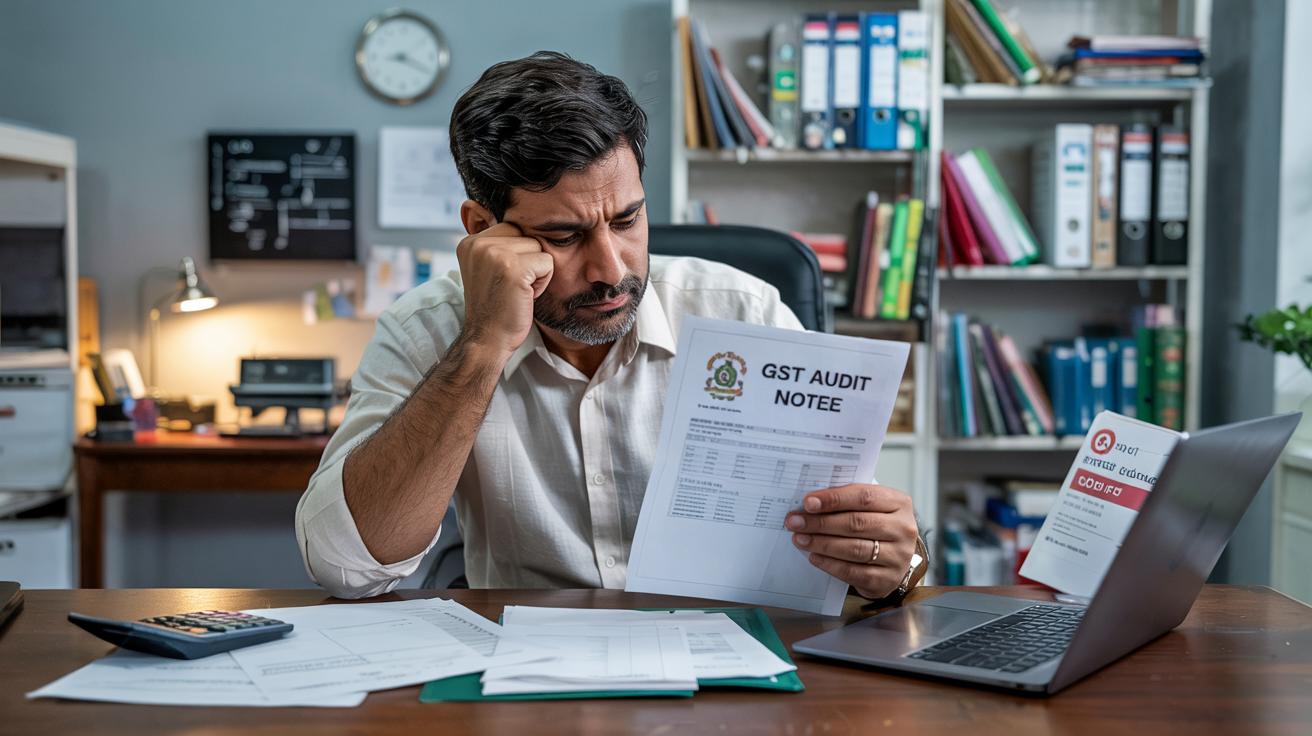I’ll never forget a conversation I had with a fellow CFO at a mid-sized logistics company. Over coffee, he shared how their business received a sudden GST audit notice. “We’ve been compliant,” he insisted, “but still, the officers flagged us.” After reviewing his filings, I spotted the issue almost instantly—input tax credit claims didn’t quite match supplier filings. It wasn’t fraud, just a clerical oversight. But it was enough to draw scrutiny.
That story isn’t unique. In my years as a CFO, I’ve seen perfectly honest businesses land in hot water simply because of small red flags. A GST audit isn’t just about finding fraud—it’s about finding gaps. And those gaps can trigger an officer’s attention faster than you think.
So, let’s walk through the most common GST audit red flags and common triggers that invite scrutiny - and more importantly, how you can avoid them.

1. Mismatched Input Tax Credit (ITC) claims
One of the biggest red flags I’ve seen is mismatched ITC. Businesses often claim ITC based on purchase invoices, but when the GST portal cross-checks it with GSTR-2A or GSTR-2B (supplier filings), discrepancies pop up.
Real-world CFO story:
At a client’s engineering firm, their accounts team booked ITC on a large supplier invoice. Problem? The supplier hadn’t uploaded it on time. Result: a mismatch that triggered a detailed audit. It took weeks of back-and-forth to reconcile.
CFO takeaways:
- Always reconcile ITC claims with GSTR-2A/2B before filing returns.
- Build a monthly reconciliation checklist.
- Follow up with non-compliant suppliers promptly.
- Use accounting software with auto-reconciliation tools.

2. Sudden spikes in turnover or ITC
Tax officers love consistency. A sudden jump in turnover or ITC, without a clear explanation, sets off alarm bells.
Real-world CFO story:
At a retail chain I advised, one quarter showed unusually high ITC claims due to bulk vendor purchases. The system flagged it as suspicious. Because we had maintained detailed vendor agreements and stock records, we could justify it. Without those, the scrutiny would have been far worse.
CFO takeaways:
- Document reasons for turnover spikes (new contracts, seasonal demand).
- Keep supporting records like purchase orders, agreements, and stock registers.
- Flag unusual trends internally before they flag you externally.

3. Frequent amendments and late filings
Frequent corrections in GST returns look like poor compliance discipline—and tax officers see it as a pattern worth investigating.
Real-world CFO story:
One of our subsidiaries repeatedly filed amendments for outward supplies. It wasn’t fraud, just coordination gaps between sales and finance. Eventually, a GST officer visited for a desk audit. The fix? We streamlined sales-to-finance reporting and created a “return filing calendar” with internal cut-offs.
CFO takeaways:
- Set up a compliance calendar with clear internal deadlines.
- Assign ownership to specific team members.
- Reduce amendments by conducting pre-filing internal reviews.

4. High refund claims without strong backing
Exporters and service providers dealing with zero-rated supplies often claim refunds. But high or frequent refund claims invite closer inspection.
Real-world CFO story:
I recall working with an IT services firm that claimed GST refunds for exports. The issue? They hadn’t kept sufficient foreign remittance proofs. The claim was stuck for months until we provided bank FIRC (Foreign Inward Remittance Certificate).
CFO takeaways:
- Keep proper documentation: shipping bills, invoices, bank remittances.
- Cross-check refund applications before submission.
- Avoid over-claiming; be conservative and precise.

5. Related party transactions and unusual pricing
GST authorities keep an eye on transactions with related parties—especially if prices look artificially low or high.
Real-world CFO story:
A client in the pharma sector sold goods to its subsidiary at a discounted rate. Even though it was commercially valid, the officer questioned whether GST was underpaid. Fortunately, we had proper transfer pricing documentation and board approvals to back it.
CFO takeaways:
- Always document arm’s-length pricing rationale.
- Maintain board resolutions or pricing policies.
Be prepared to explain any deviation from market norms.
Wrapping it up: How CFOs can stay ahead of GST audits
If there’s one thing I’ve learned as a CFO, it’s this: GST audits are less about catching fraud and more about catching patterns that don’t add up. The good news? With the right discipline and foresight, you can keep your business off the radar.
Here’s a simple action checklist to stay audit-ready:
- Reconcile ITC monthly with GSTR-2A/2B.
- Document reasons for unusual turnover or ITC spikes.
- Follow a strict compliance calendar.
- Keep airtight refund documentation.
- Justify related party pricing with records.
Think of it this way—GST officers are like auditors looking for “smoke.” Your job is to ensure they don’t mistake steam for fire.















